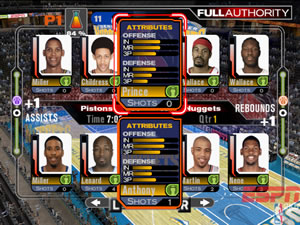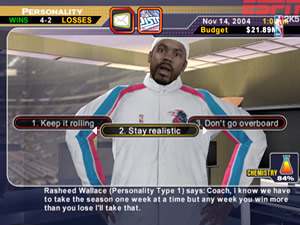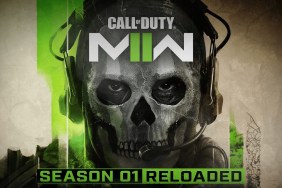A steady shooter.
It’s my understanding that NBA commissioner David Stern is a wise man. He can
tie a tie and wears glasses, both of which are objective signs of intelligence.
The man can read, people. He can read words, decipher their meaning, process
their intent and even respond through a series of vocal grunts.
So tell me this: how can a man who in every other way has proven a certain amount of cognitive mastery be unable to comprehend a calendar?
You see, the NBA season officially stars on November 2, 2004. First game of the
year! First step towards the championship! SECOND most important thing
going on that day, right behind a little event known as the 2004 Presidential
Election.
Nice
move, Dave. How about next year you set it for September 11?
Since no one is going to watch basketball on opening day, you might as well get it out of the way now by picking up a basketball video game, and just like the presidential race, the two candidates here are running an even heat. ESPN
NBA 2K5 doesn’t take any big risks, sticking pretty closely to the elements that made its
predecessor successful. Whether or not it will raise taxes remains to be seen, but at the great price of $19.99, it gets my vote.
By and large, the gameplay of ESPN NBA 2K5 is much as it was in last year’s game. More attention has been focused on improving the realistic flow of things, made most evident by tweaks to the post play. Taking a cue from NBA
Live, ESPN now includes a pro hop button that allows you to either make a two-footed hop into the lane or a groovy spin to bounce off defenders. Both are welcome additions that open up the one-on-one game.
The pro-hop move also makes up for the unsatisfying play of IsoMotion 2, an “enhanced’ version
of ESPN‘s answer to Live‘s superior Freestyle
system. IsoMotion handles just as it did before, letting you put moves on a defender
by using the right stick and conversely allowing the defender to try to steal
the ball or take a charge by matching you. The problem is that the IsoMotion
moves are still canned and slow; you never really feel like you’re in
control of them. You’ll push the
stick to the right and watch your guy slowly gather up for a crossover and try
to make the move, rather than simply flipping the ball between his legs and letting
you handle the rest. Though you can cancel mid-move, it’s too long and scripted
to begin with. It’s
just not a very good system and should be re-worked.
On the other hand, ESPN trumps Live when it
comes to sharing the ball. The game itself plays slower and more methodically
than Live‘s up-tempo style, but guys will actually catch passes
in stride, leading to more fast-break opportunities. Tweak your team’s tempo
setting and your players will actually follow through by hauling butt up and
down the court.
But for all its style, the game drops the ball with its lenience on shooting.
Regardless of the difficulty setting, almost anyone will drain an open shot,
and many will sink contested shots with ease. You wind up spending less time
running plays (the game does contain full playbooks for each team, thankfully)
and more time trying to get some space to take a jumper. ESPN‘s
gameplay is a mix between smooth, flowing style and slow, mindless swishes.
 Most
Most
of the same modes return, although for some silly reason they’ve renamed Franchise
mode “The Association.” It’s still pretty solid, requiring you to manage rosters
and money, but has undergone a few changes. You can now choose to either play
games yourself, let the computer simulate them, or play them in the new “Full
Authority’ mode.’
This is essentially a turn-based affair where you dole out
shots to your players, give them basic instructions on both offense and defense,
and let the computer sort out the results. “Shots” function as the resource –
you gain more shots based on your performance, which in turn lead to more scoring
opportunities. Star players also have added abilities, such as “Wily Vet’ or “Killer
J’, that require more shots but increase their chances of scoring or shutting
down their opponent. You have eight turns per game (two per quarter) and have
to keep a close eye on stamina, fouls and hot and cold streaks.
It’s interesting, certainly, but Full Authority is something of a misnomer. The CPU decides whether or not guys make shots, so it still feels like a random roll of the dice rather than really giving you strategic control over the outcome of a game. A nice feature would have been the ability to hop in after any turn and play out the rest of game yourself, but no such luck. However, it’s a more intriguing way to get through a season quickly than just simulating it the whole way through.
Another feature of the revamped Association mode is team chemistry. After each
week passes, someone on your team will need to talk to you about something,
played out through a stupid, general comment by the player and a list of three
possible responses. Pick the wrong one and chemistry goes down. Ah, how simple.
What could have been a decent occasional responsibility is turned annoying
by requiring you to deal with it every single week.
Equally irritating is training. If you don’t train, chemistry goes down. If you do train, chances are someone on your squad will get injured. This is usually an area of growth for a team, a place to make them gel and play better overall, but in ESPN feels like a heinous, risky requirement that ultimately leads to doom when Kobe Bryant breaks his arm during a shooting drill.
The whole team chemistry concept is fine, but it’s not well-implemented. Other factors should determine chemistry, such as success on the court or being put on the trading block. Instead, it’s just this random crapshoot of training and multiple choice conversations with players and feels more like a burden than anything.
 When
When
you grow tired of The Association, you can hop over to 24/7 mode, which is almost
identical to last year’s version but with more items to unlock. You still create
a baller to play in a collection of matches and training drills. If you ignore
him for too long, your player’s skills will degrade. The mode is still broken,
though, when it comes to the A.I. You can run past virtually every opponent for
a free dunk or lay-up regardless of your skills, or pump fake them off their
feet for a wide-open shot. Plus, the items are still merely cosmetic and don’t
add anything to your skills. 24/7 is an over-hyped mode that ultimately functions
as more of a diversion than anything else.
Quick Play, Practice, Tournaments, and Online round out the modes. Playing against
other gamers is still rewarding as the online component functions just as it
did last year and still works well on both the PS2 and Xbox.
If there’s one area in which ESPN clearly dominates the competition, it’s in its graphics. Player models are terrific, the framerate is smooth throughout and the animations are pretty fluid. They even got the unique free-throw animations down for certain players. The crowd gets visibly pumped when the game is close and the home team puts on a run, adding a great energy to the atmosphere. Although more choices in the character creation feature would have been nice, you won’t find many faults with the way the game looks on either system.
The sound is less impressive. Bob Fitzgerald’s play-by-play is adequate if subdued, and though Bill Walton might be a master of hyperbole in real life, here he’s just a repetitive old man. I hope you like weak hip-hop, because that’s the soundtrack.
The timing might be terrible for the start of the season, but you have to commend ESPN NBA
2K5 for getting the price right. This is a solid title that matches NBA
Live stride for stride and costs half as much. Whether or not it’s a
better game depends a lot on your own personal preference, although unlike that “other’ election,
it’s safe to say that you can’t really go wrong with either candidate.
-
Good looks
-
Smooth new moves
-
Great price!
-
Silly team chemistry
-
24/7 mode still broken
-
Shots fall too often







